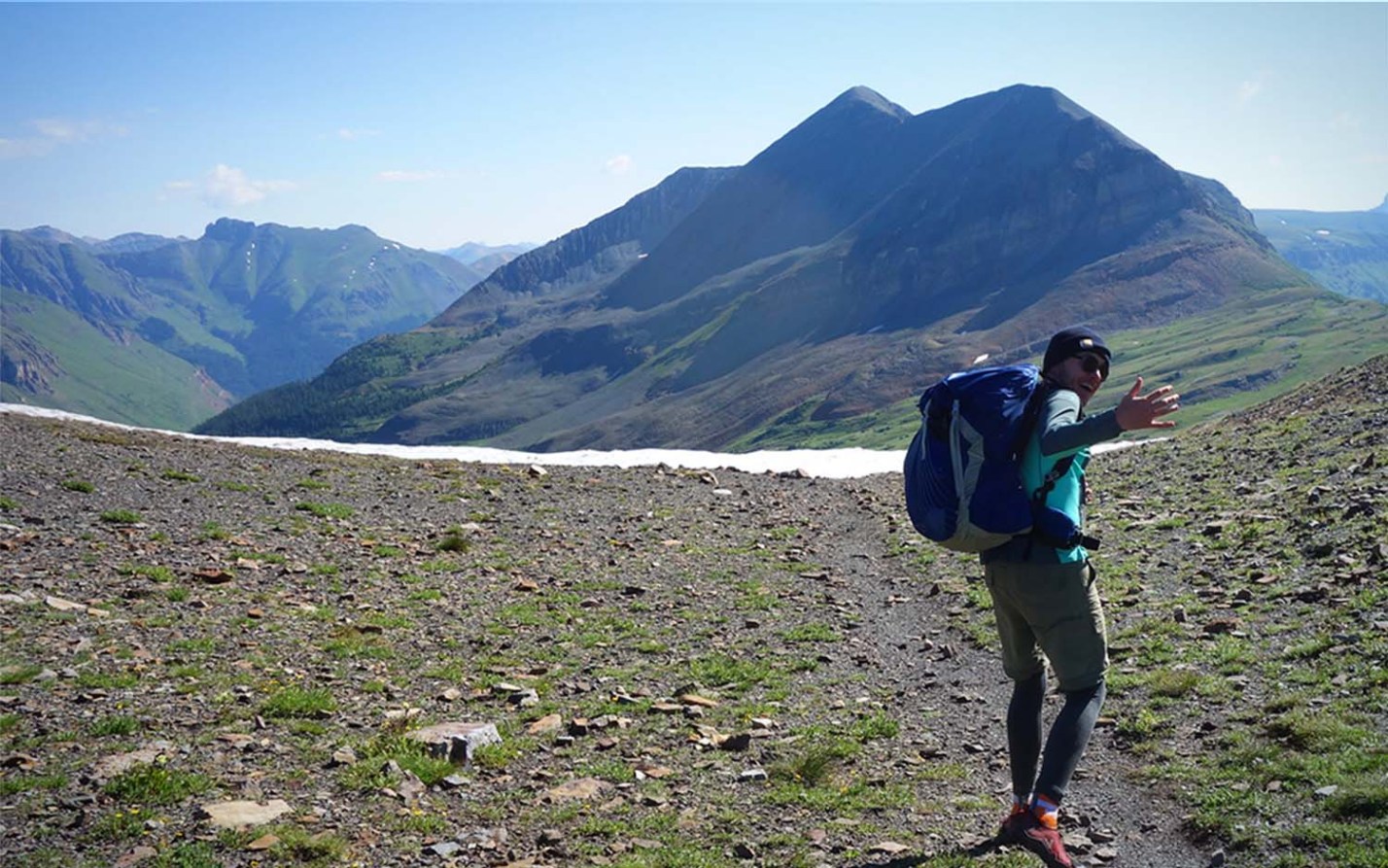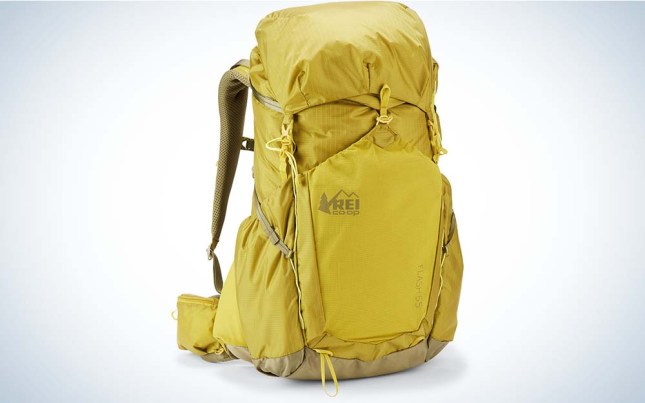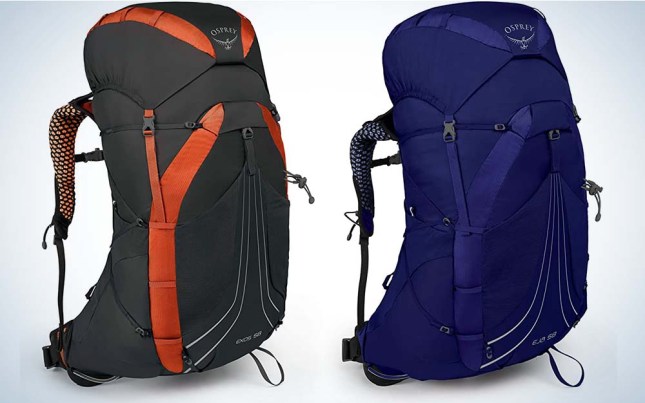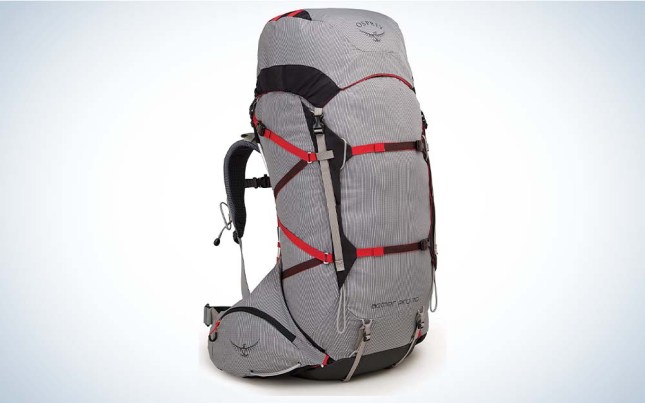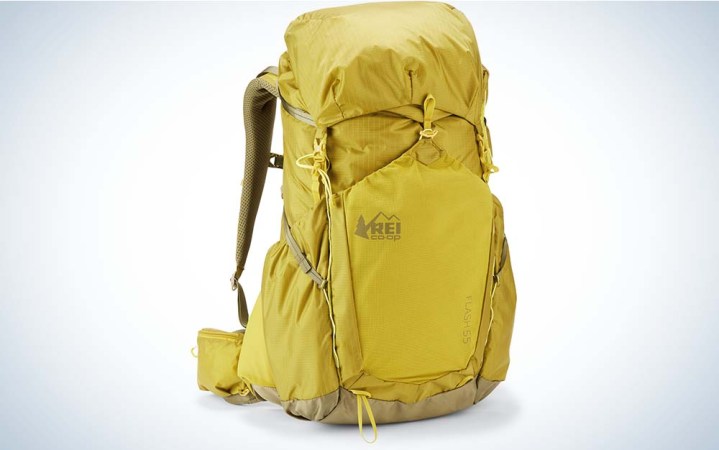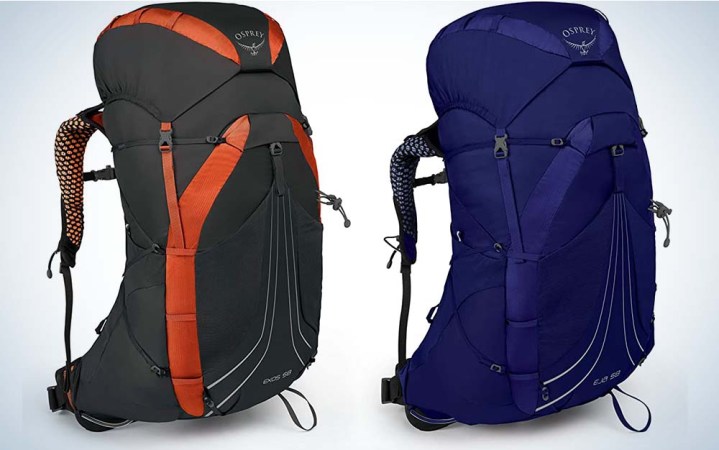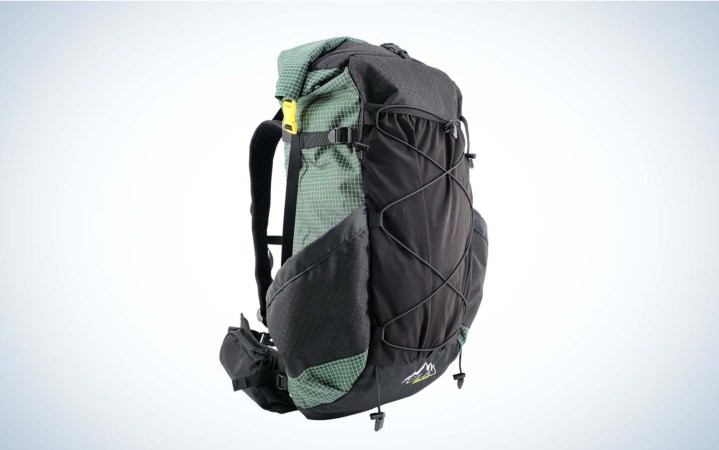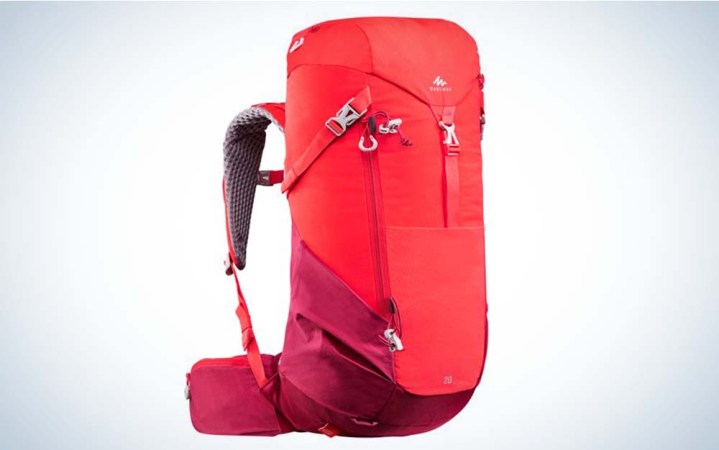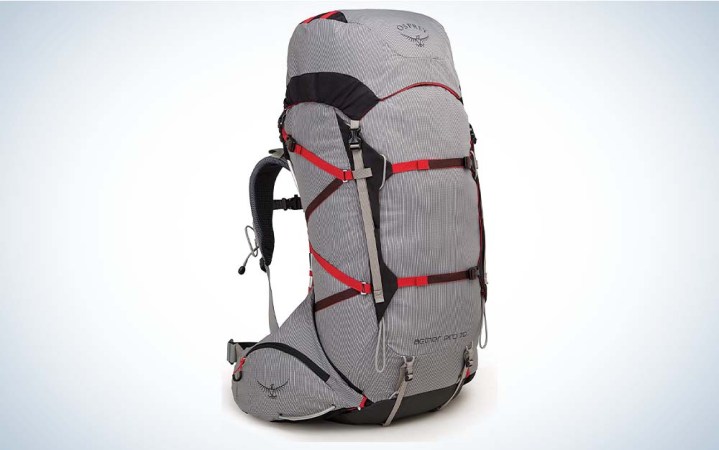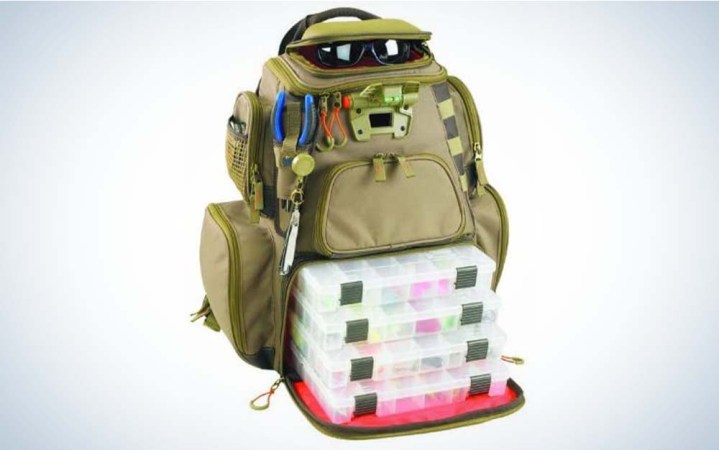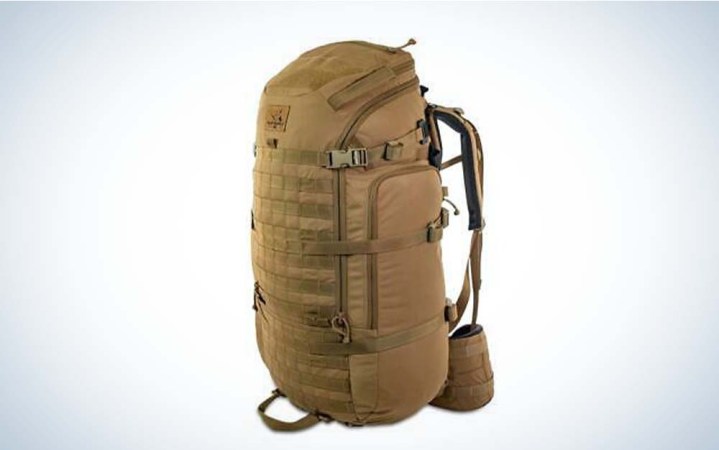We may earn revenue from the products available on this page and participate in affiliate programs. Learn More ›
Backpacks are the backbone of most outdoor pursuits, and finding one that fits your body and your activities is critical to success. But with so many different brands and models available, choosing one can be a daunting task. I’ve narrowed the best backpacks down, so that you can find the one that fits and is best suited to your next adventure.
- Best Overall: REI Co-op Flash 55
- Best for Backpacking: Osprey Exos 58/Eja 58
- Best Ultralight for Backpacking: ULA Circuit
- Best for Day Hikes: Decathlon Quechua MH500 20L Hiking Backpack
- Best for Heavy Loads: Osprey Aether Pro 70/Ariel Pro 65
- Best for Fishing: Wild River Tackle Tek Nomad Lighted Backpack
- Best for Hunting: Kifaru 44 Mag
- Best for Travel: Mountain Hardware Redeye 45
- Best for Winter: Mountain Hardwear Powabunga 32
How We Tested the Best Backpacks
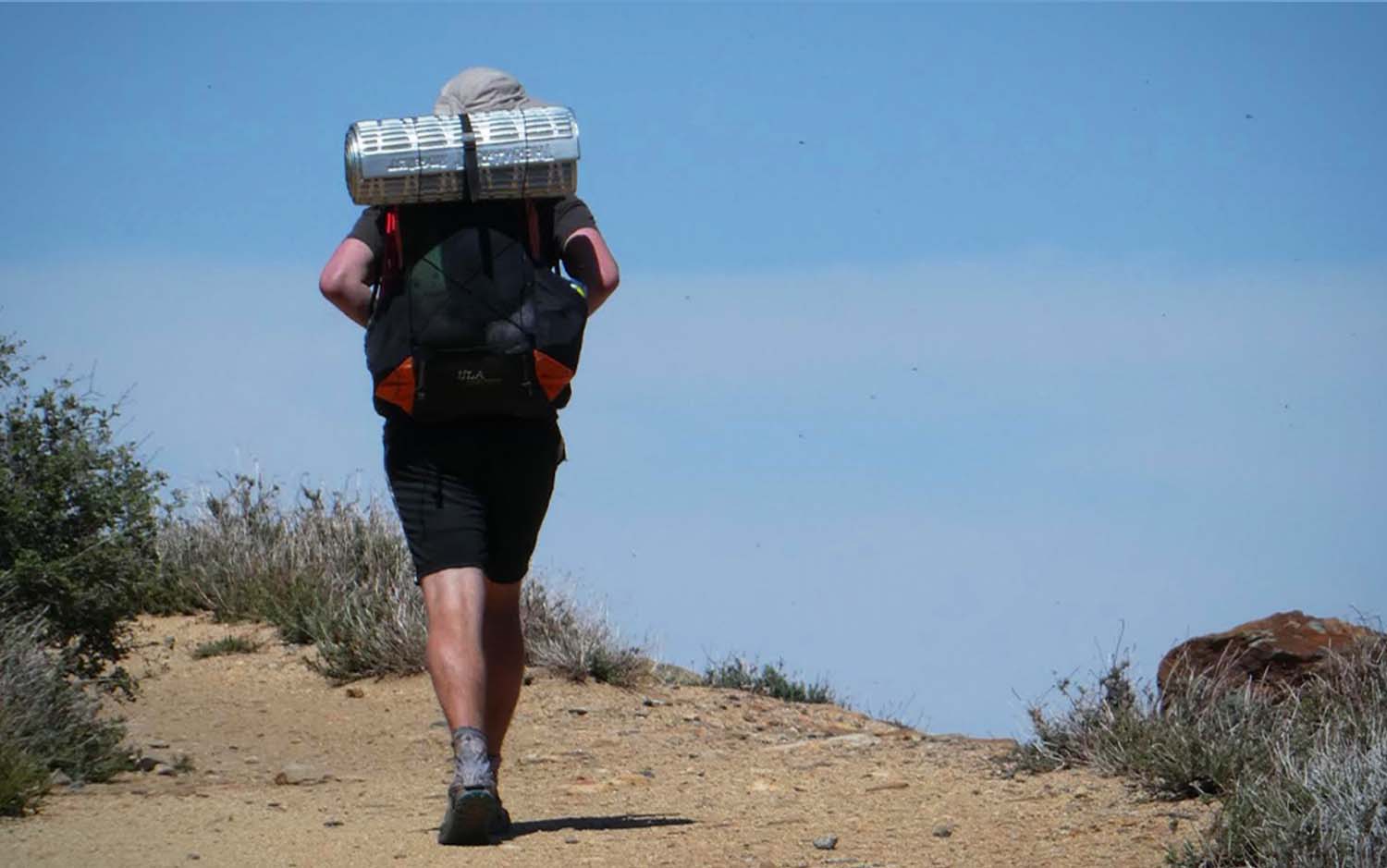
I’ve taken packs across the United States, from the Appalachian Trail to Colorado, from Arizona, to the North Cascades, carrying loads from as little as 12 pounds up to 40 pounds or more. In that time, I’ve identified the key features that make for a great backpack (awesome suspension, durable body and side pockets, proper back ventilation, and easy access to water) and those that we could do without (zippered front pockets rank high on this list). I selected packs for this article based on my experience and recommendations from Outdoor Life staff’s field testing.
Best Backpacks: Reviews & Recommendations
Best Backpack Overall: REI Co-op Flash 55
Key Features
- Weight: 2 pounds, 10 ounces
- Capacity: 55 liters
- Comfortable carrying up to 25 pounds
- Roll-top closure with removable top lid
- Hip belt pockets, double side pockets, front mesh pocket
Pros
- Removable hip belt pockets, shoulder strap pocket, top lid pocket, and compression straps
- Separate forward side water bottle pockets for easy access
- Ventilated mesh back panel
Cons
- Doesn’t carry heavy loads comfortably
Most backpacking packs fall into one of two categories: a heavy pack built for heavy loads with tons of bells and whistles, or an uncomfortable ultralight model for fastpacking adventures. Choosing which type of backpacker you are can be daunting when you’re first starting out, but with the Flash 55 you don’t have to. The REI Flash 55 transitions easily from the perfect beginner’s pack to a stripped-down design, with any number of configurations possible in between. Start out with the convenience of a top pocket, compression straps hugging your pad to the outside of your bag, snacks tucked into the hip belt pockets—then ditch what you didn’t use on your next trip (saving up to 7.5 ounces of weight in the process).
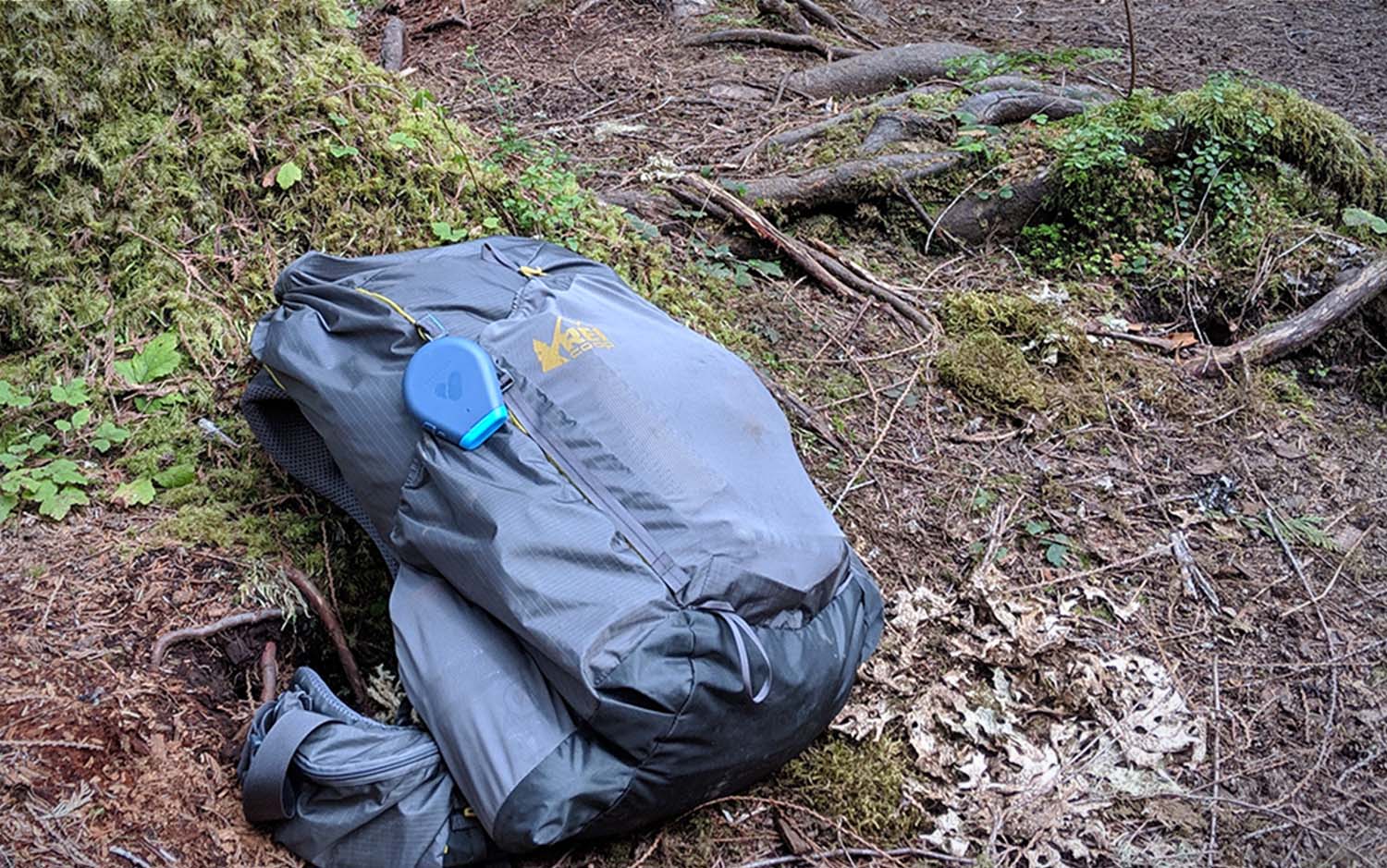
I’ve taken this pack on everything from multi-night treks through canyons in Arizona to overnight trips in the Cascade Range. I’ve yet to experience any discomfort or bruising around the hips or shoulders. The roll-top closure made it easy to take out gear and compress it back down again on the fly (I prefer it to the more traditional drawstring closures). It was nice to be able to move the compression straps around to better fit my gear on days where I needed to strap my poles to the outside of my bag or compress the main compartment when my food sack started to empty out.
Experienced backpackers — who know what kind of loads they will be carrying and what kind of comfort features they want — may opt for a pack that’s already dialed into their needs, but the Flash 55’s versatility makes it a great beginner’s backpack that can level all the way up to shorter thru-hikes.
Best Backpack for Backpacking: Osprey Exos 58/Eja 58
Key Features
- Weight: 2 pounds, 10 ounces
- Capacity: 58 liters
- Comfortable carrying up to 40 pounds
- Drawstring closure with removable top lid
- Hip belt pockets, side pockets, front mesh pocket
Pros
- Ventilated back panel keeps backs dry on long treks
- Spacious front mesh pocket was perfect for stuffing layers as they shed
- Great suspension
- Low weight compared to other packs with an internal frame
Cons
- Can be a challenge to grab water bottles out of the side pockets
The Osprey Exos is a lightweight pack that will last for years. The streamlined profile has kept me from packing the kitchen sink on more than one occasion, but it’s got the suspension chops to handle heavy loads when needed. My husband tested the Exos, and one of the first things he noticed was the gap between the body of the pack and the mesh back panel, which is held taut by two lightweight metal rods running up and down the sides. This separation means that there is substantial airflow against the back, minimizing the chaffing experienced on the hottest days. This lightweight frame is also part of the pack’s excellent suspension — he was comfortable carrying loads up to 40 pounds through the San Juan Mountains of Colorado.
While other packs boast multiple entry points into the main compartment, my experience with the Exos has been that once you get used to a top-loading pack — where you have to think carefully about what gear you are stashing at the bottom, since it will be a pain in the butt to fish out in the middle of the day — it ultimately results in a better load distribution and less confusion about what pocket or corner my sunscreen landed in. With the Exos, it helps that the front mesh pocket is quite generous, easily fitting all the layers I end up stripping off as the heat of the day picks up. The side pockets are significantly tighter than other packs in this category, but the benefit is that any tent poles or water filters you’ve stashed there are guaranteed to stay put.
The latest iteration of the Exos did away with the hip belt pockets — where were backpackers supposed to stash their snacks and their phone? — but Osprey has brought them back in the newest version that was released for 2022.
Best Ultralight Backpacking Backpack: ULA Circuit
Key Features
- Warranty: Lifetime
- Weight: 37.3 ounces (33.8 in Ultra)
- Available Torso Sizes: S to XL (15 inches to 24 inches)
- Available Hip Belt Sizes: XS to XXL (26 to 47 inches)
- Shoulder Straps: J-straps or S-straps
- Adjustment Points: Hip belt, shoulder straps, load lifters, and sternum straps
- Frame: Foam with a 1.2 oz carbon fiber and Delrin suspension hoop and a single aluminum stay
- Body Material: Available in Robic or Ultra
- Pockets: Two hip belt pockets, two side pockets, one large back pocket
Pros
- Available in high-performing Ultra fabric or more cost-effective Robic
- Can handle large, heavy loads while scaling down for smaller carries
- Wide range of sizing options makes it easier to get the right fit
- Customizable if you want bottom straps, ice ax loops, etc.
Cons
- Limited pockets compared to other models we looked at
ULA is a mainstay of the ultralight backpacking world, and their packs are regularly seen on long trails across the country. In a lot of ways, they epitomize what ultralight packs are all about: ULA packs pare away everything but the bare essentials. They test the limit of how little structure and frame you can get away with across a range of load weights. They’re tough and durable enough to go the distance on not one but multiple thru-hikes. ULA also has a lifetime warranty, and — unlike other so-called warranties — thru-hikers have reported that ULA stands by their policy.
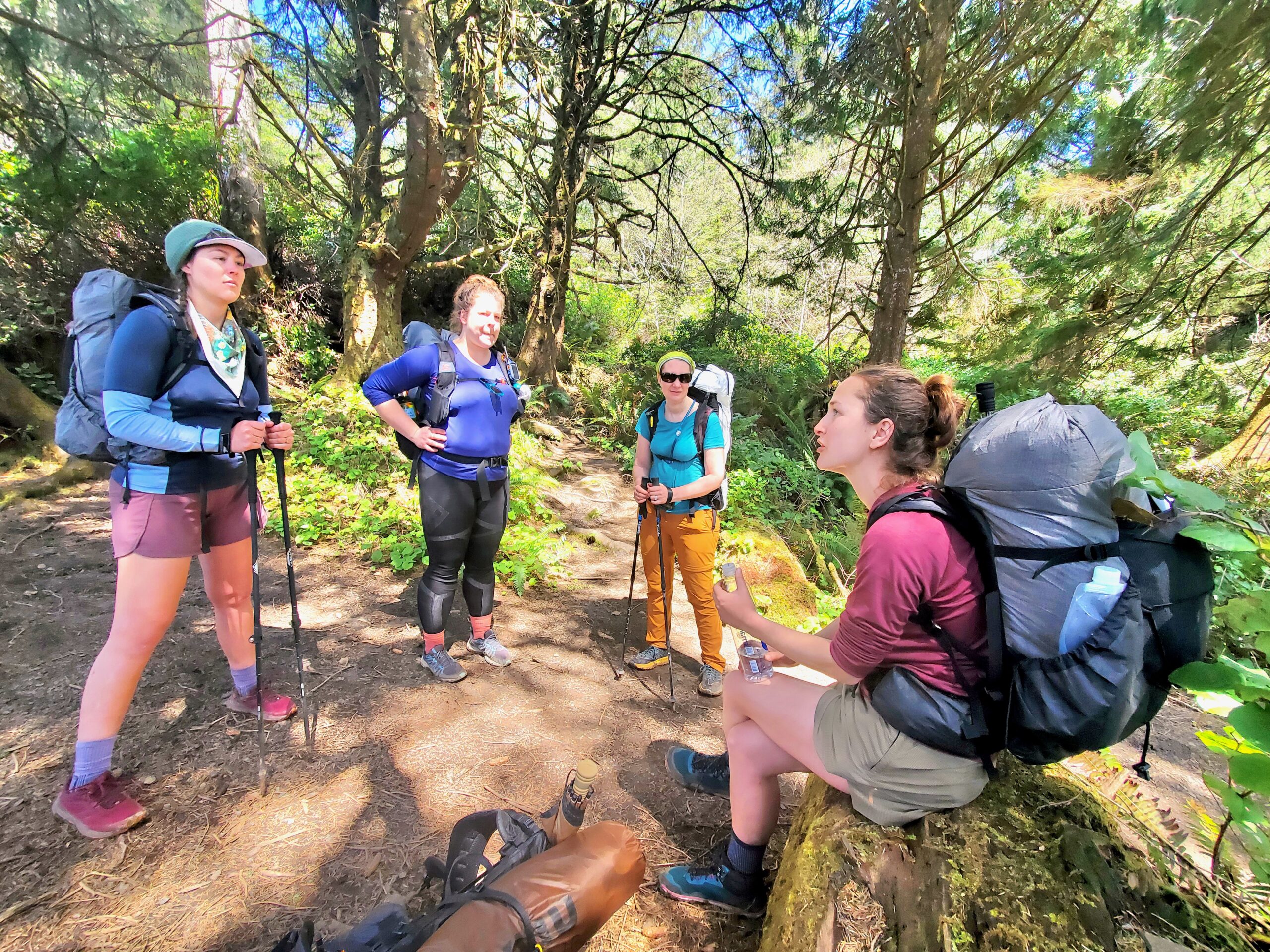
Ultra is a comparatively newer fabric in the ultralight landscape, that meets or exceeds the durability and waterproofness ability of other best-in-class fabrics while weighing significantly less. In addition to using Ultra 200 on the body of the pack, the bottom is reinforced with Ultra 400 for extra durability. Whether the weight savings (and promised waterproofness) of the Ultra material is worth the extra cost is ultimately a matter of preference — either option would be an excellent choice that would serve you well for multiple thru-hikes.
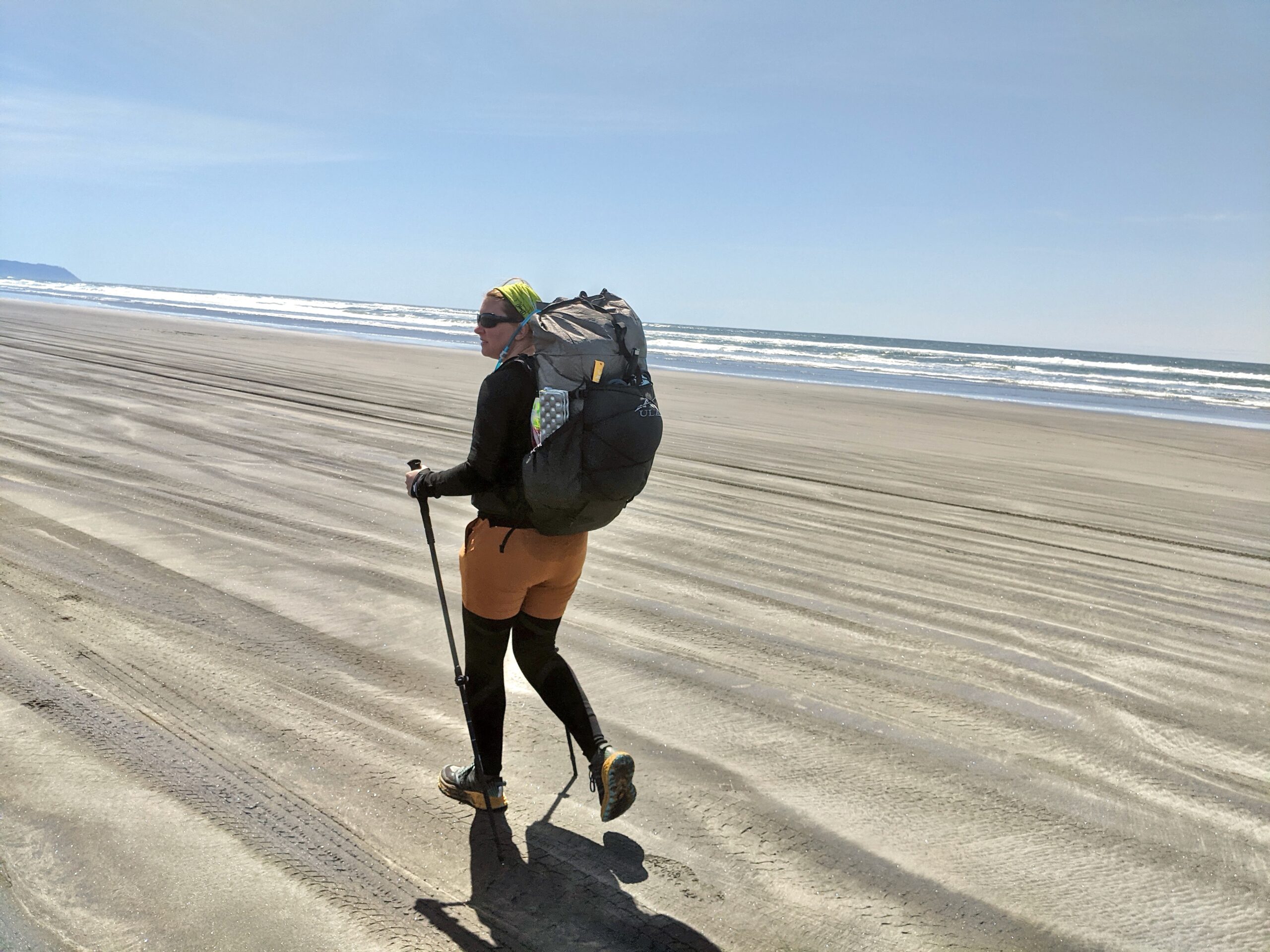
The level of support the ULA Circuit provides is perfect for the 30-pound loads typical of long water carries in the desert of the Pacific Crest Trail or the food haul needed for the 100 mile wilderness on the Appalachian Trail. While other ultralight backpacks in this test dispensed with any sort of frame or structure to the back panel, the ULA Circuit has a hoop running along the outer edges up across the top of the back mesh panel and then meeting again at the bottom. This provides an exceptional level of support for its minimalist design.
Something the ULA Circuit drove home for this testing group is that the switch to ultralight backpacks is not just about cutting weight from your kit; it’s about reimagining your relationship with your backpack and, by extension, your gear. But if you’re prepared to really rethink your relationship to your backpack, then we think the ULA Circuit is the place to start. All our testers were impressed with how comfortable it was, even with heavier loads, both compared to traditional-style backpacks and compared to other ultralight models we looked at. So even if you’re just getting started on your ultralight journey, and haven’t yet upgraded to the best ultralight tent or the best ultralight quilt, this pack will work for the kit you have now, and the kit you have in the future. Plus its warranty-backed durability means that you may never need to switch it out.
Read our full review in The Best Ultralight Backpacks.
Best for Day Hikes: Decathlon Quechua MH500, Hiking Backpack, 20L
Key Features
- Weight: 2 pounds, 6 ounces
- Capacity: 20 liters
- Comfortable carrying up to 15 pounds
- Drawstring closure with fixed top lid
- Hip belt pockets, side pockets, front mesh pocket
Pros
- Low price
- Padded hip belt and ventilated back panel
- Easy to grab water out of the side pockets
- Integrated rain fly
Cons
- Heavy for only carrying 20 liters
You’d think there’d be a catch with Quechua MH500 given its low price — either durability would take a hit, or it would be uncomfortable (or some combination of the two). But on several early-spring day hikes in the foothills of the Cascades, this pack performed just as well as its more expensive counterparts without cutting corners. The Quechua MH500 is a fully-featured daypack that comes in at well under $100. It’s a great choice for everyone, from novices to weekend warriors.
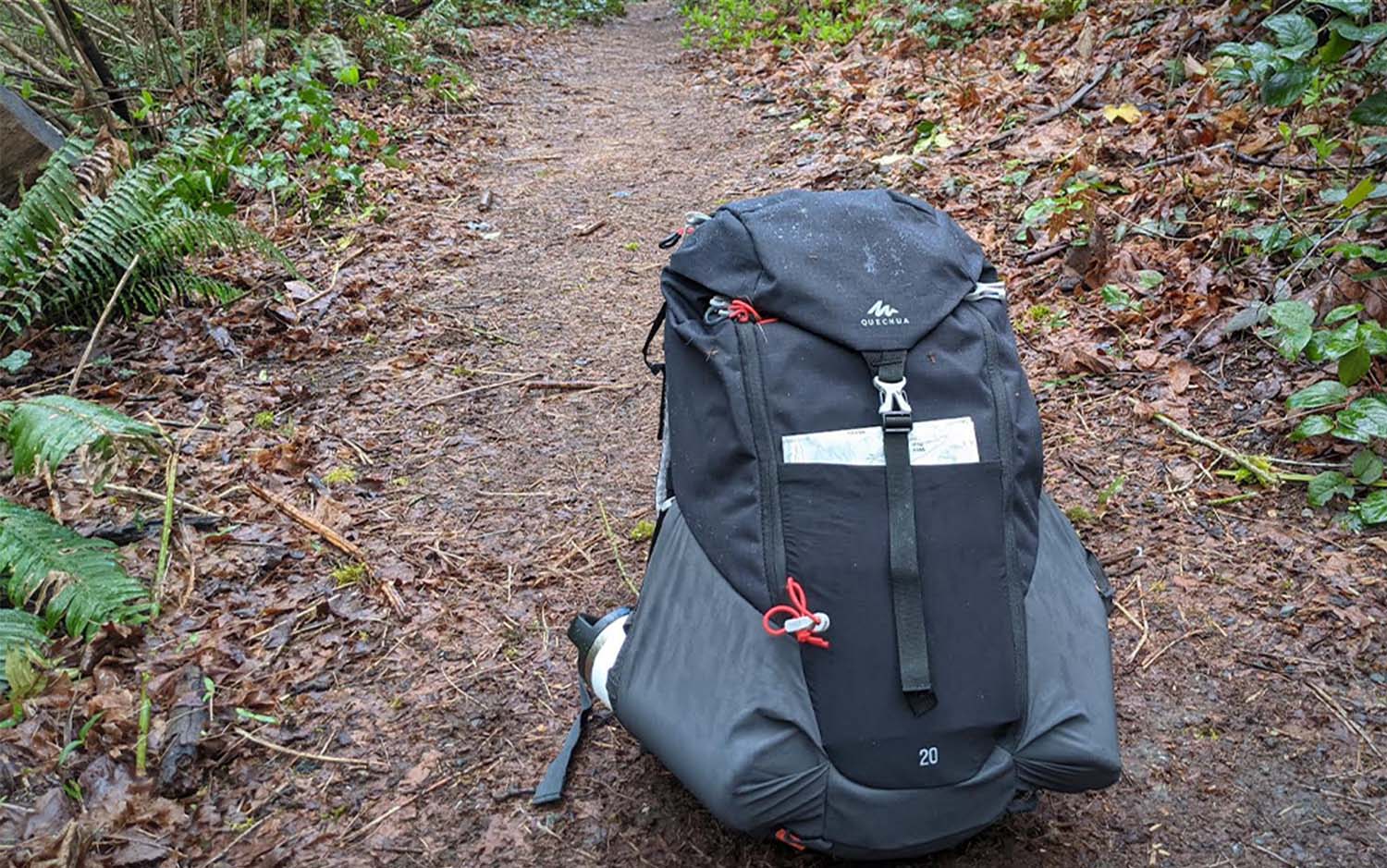
This one has all the features that I’ve come to expect from a great daypack — padded hip belt and shoulder straps with adjustable load lifters, a mesh backpanel, a sternum strap, tons of pockets, and an integrated rainfly (although I’ve found that the waterproof coating on the polyurethane fabric does a fine job with short-burst showers). If I had a gripe, it’d be that it’s missing the integrated whistle on the sternum strap, but it’s easy enough to carry a separate whistle if you have any concerns about getting lost.
Decathlon offers this pack in two sizes: individuals below 5-feet, 7-inches tall, and for individuals above — people with a long or short torso may want to size up or down if they are close to one of these two heights. The hip belt here is also on the narrow side, and won’t fit as wide a range of individuals as other daypacks.
Best for Heavy Loads: Osprey Aether Pro 70/Ariel Pro 65
Key Features
- Weight: 3 pounds, 15 ounces
- Capacity: 70 liters
- Comfortable carrying up to 50 pounds
- Drawstring closure with removable top lid
- The largest hip belt pockets I’ve ever seen are removable
Pros
- Extremely durable with minimal fail points
- Lightweight for its load capacity
- Good support and ventilation
- Adjustable sizing with the option to swap out the hip belt if needed
Cons
- No front or side mesh pockets
- Narrow profile
The Aether Pro 70 carries heavy loads comfortably without adding to it. This pack is built to last on long adventures over tough terrain. This pack holds more weight more comfortably than anything we’ve tried, and it was my first pick to carry all the gear for three people on a 31-mile, four-day trek on Mount Rainier’s Wonderland Trail (the other adult was carrying a toddler in the Osprey Poco AG). My five-foot-five frame protested when I first hauled the 40-pound load onto my shoulders, but once I had the hip belt snug and the load lifters dialed in, I barely felt it (well, my hips and shoulders barely felt it, my thighs definitely noticed it on the 2,000-foot climb to Summerland).
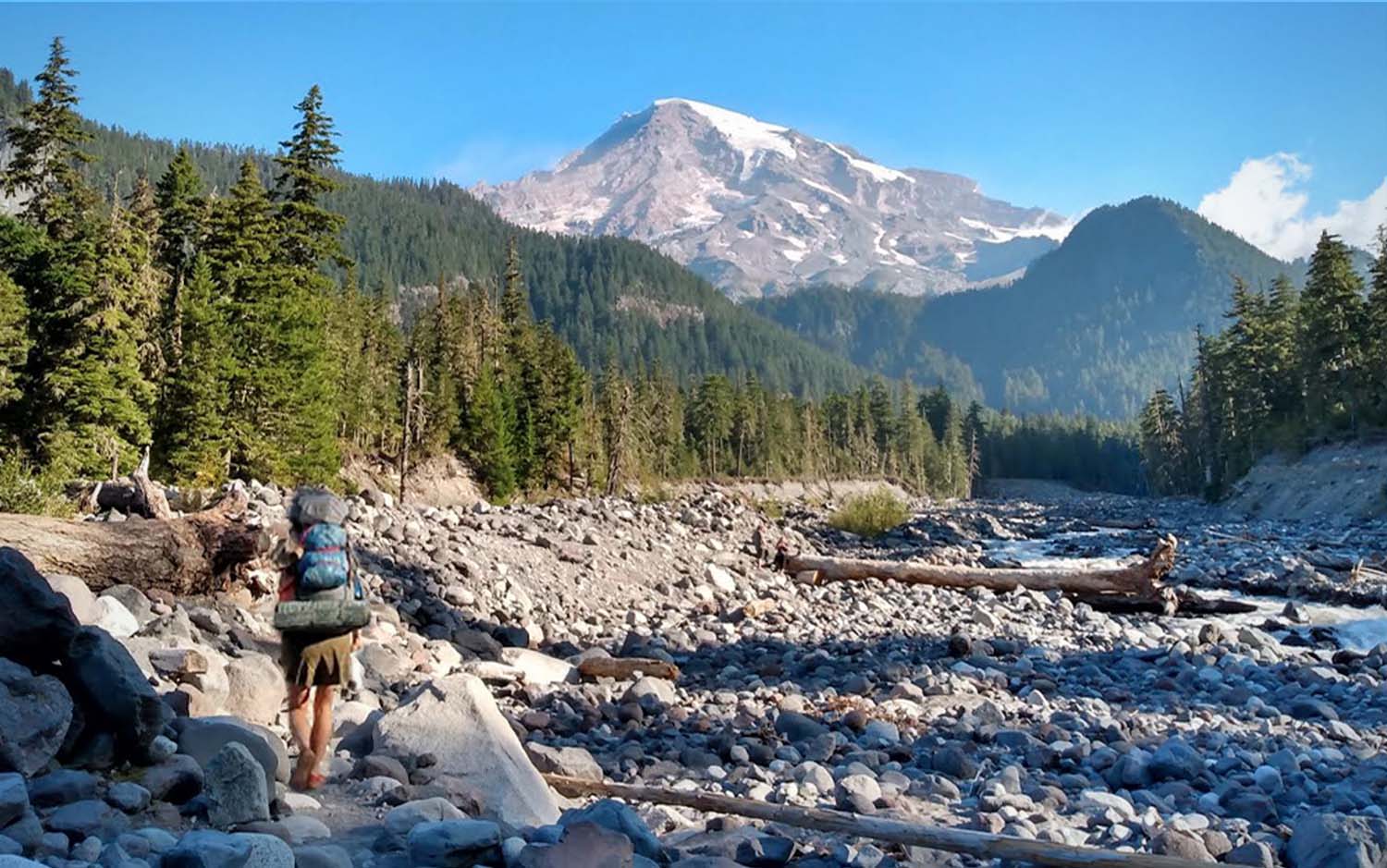
The features on this pack are very minimal — don’t look for an undercarriage zipper or side mesh pockets — but it retains the top lid pocket, spacious enough for your essentials for the day. But it has seemingly endless hip-belt pockets, which is useful when you’ve got to keep enough snacks at the ready for two hustling adults and one growing two year old. The sleeping pad straps helped keep some of our more durable gear out of the interior of the pack, while the front compression straps worked in a pinch to hold the tent body when I couldn’t stuff it into the interior.
Osprey bills the Aether Pro 70 as a mountaineering pack, and while I think its utility extends to backpacking and off-trail missions, this is not the right pack for a first-time backpacker or someone planning an overnight.
Read Next: Best Backpacking Stoves
Best Fishing Backpack: Wild River Tackle Tek Nomad Lighted Backpack
Key Features
- Weight: 4.7 pounds
- Capacity: 3600-size utility trays in the first compartment and five 3500-size utility trays in the other
- Zip closure with inset second zip pocket
- Pockets at the main compartment, top compartment, six side pouches, and pliers pouch
Pros
- Comfortable fit
- Holds a huge amount of gear
- Lights allow you to see exactly what’s inside
Cons
- Price may deter some bargain-minded anglers
This fishing bag is for on-the-go anglers who want to be prepared for any possibility with a wide range of tackle and accessories. It also works well in low light conditions thanks to an integrated LED light system. This lighted backpack aspires to be the Cadillac of fishing storage solutions. It’s made to fit a large number of tackle trays, making it modular and versatile, and also has a fold-down work surface. Wild River has also taken into account the tools and accessories you’ll need when chasing your prey, with a molded sunglasses holder to protect your precious shades and a removable pliers pouch that has a retracting lanyard. You’ll stay more organized and won’t need to decide which gear to leave at home because you can bring it all. The lights require two AAA batteries, not included. Utility trays, however, are included. — Pete Robbins
Best Hunting Backpack: Kifaru 44 Mag
Key Features
- Weight: 3.4 pounds
- Capacity: 77.8L
- Comfortable carrying up to 80 pounds (capable of up to 100 pounds)
- Side pockets with vertical zippers
- Zipper access to main compartment
- External meat shelf
Pros
- Rugged construction
- Space for multi-day gear
- Meat shelf allows you to pack meat between bag and frame
- Zippered main compartment provides easy access
Cons
- Must buy frame separately
The 44 Mag is roomy and tough as nails. It can function as a daypack or multi-day backpack hunting pack — and pack your meat out when you’re done. The 44 Mag is a pack that covers the middle ground between day pack and 7-to-10-day expedition-style packs. It’s large enough to fit a few days’ worth of hunting and camp gear, and the meat shelf allows you to pack your meat between the bag and frame.
The bag includes side pockets and a top compartment, and with the zipper access to the main compartment, organization is easier than with most drawstring-type pack bags. Additionally, the webbing on the back of the pack allows you to attach external pockets or accessories.
The frame must be purchased separately, but coupled with Kifaru’s Duplex Lite frame, it’s a pack that can haul a surprising amount of weight — and one of the most comfortable on the market. These packs are expensive, but very durable and the company has great customer service. — Tyler Freel
Best for Travel: Mountain Hardware Redeye 45
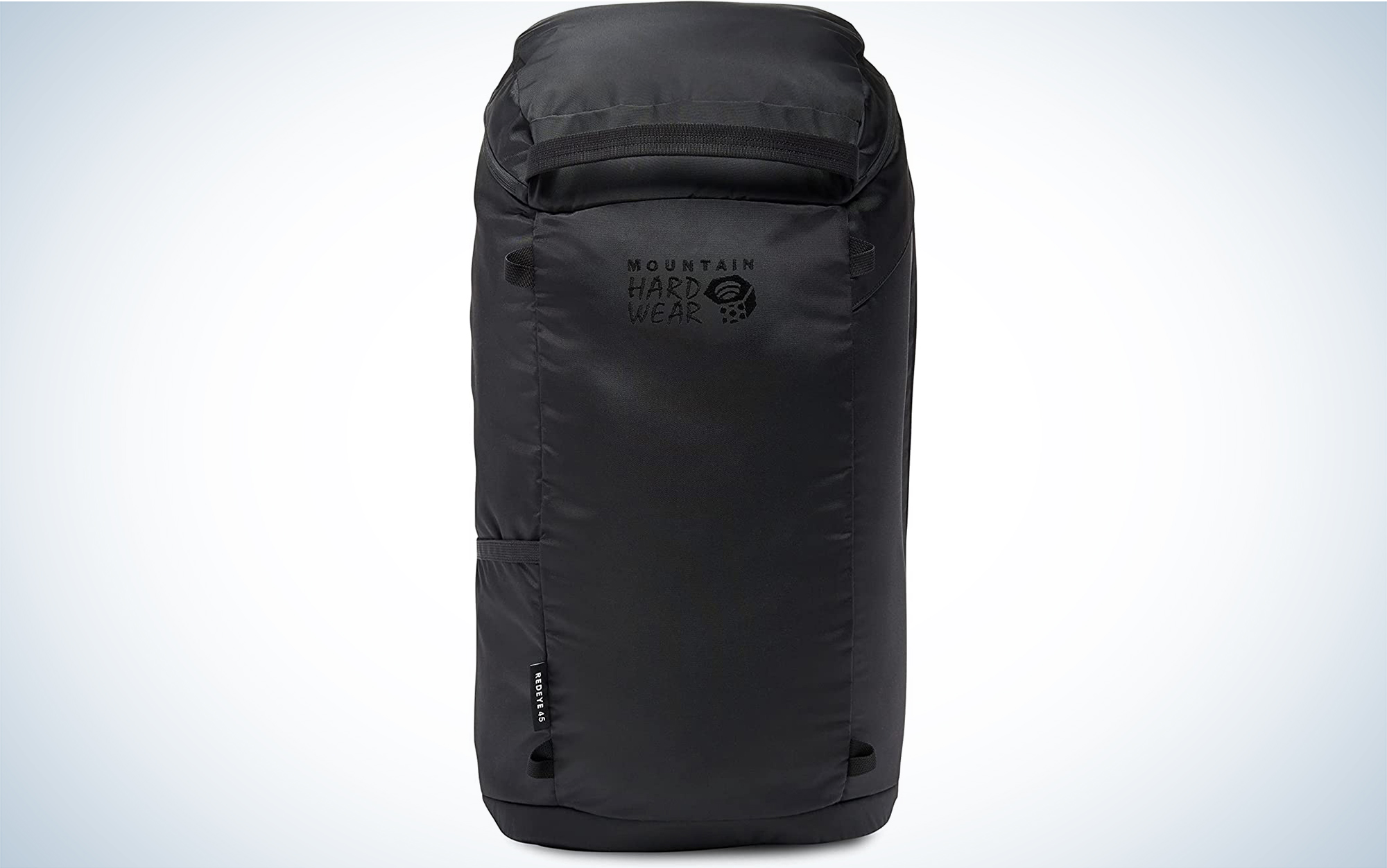
Key Features
- Weight: 3 pounds, 2 ounces
- Materials: 500D Cordura Nylon
- U-shaped top zipper
- Back panel access
- Removable hipbelt
- Padded laptop sleeve
- Price: $180
Pros
- Padded hipbelt, straps, and back panel
- Pocket with flap for easy tucking and grabbing
Cons
- No raincover
Mountain Hardware’s Redeye is slim for easy maneuvering in crowded spaces. It also has load lifters, a padded hip belt, a padded back panel, padded straps, and a sternum strap to carry heavy weight comfortably. You can easily access the main compartment with a back panel zipper and U-shaped zipper on top. A long vertical side pocket features a lip of fabric over the top so that you can tuck or grab something from this pocket without unzipping anything.
A water bottle pocket on the opposite side has a cinch cord to keep items from falling out. The lid of the bag is also a pocket and there is a padded laptop sleeve. The thoughtful design of the many pockets make this bag the perfect carry on. The zipper pulls have loops making it quick and easy to access all zipper pockets. Handles on the front and back of the top make it easy to grab your luggage off a conveyor belt or out of a car or overhead bin. The removable hip belt and tuckable straps can further streamline this pack for going through security or checking the bag.
It’s structured and comfortable when carrying gear, heavy loads, and irregularly shaped objects, making it great for adventure travel too. The full back panel access is particularly great for car camping because you can access the contents of your bag without having to dump everything out or dig to the bottom. There are external attachment points for carabiners as well. Overall, this is the best carry-on backpack for almost any method of travel. — Ashley Thess
Read Next: Best Travel Backpacks
Best for Winter: Mountain Hardwear Powabunga 32
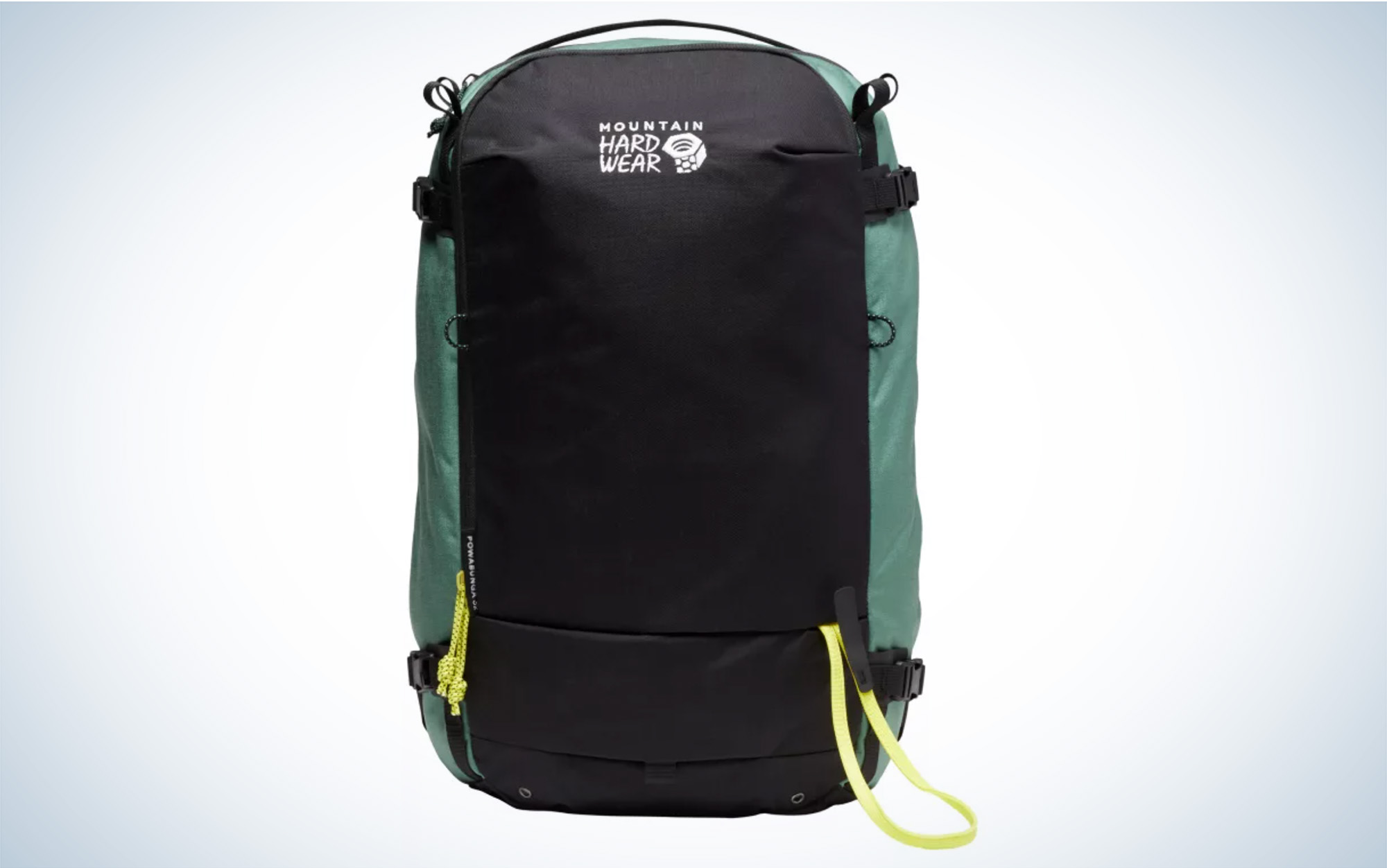
Key Features
- Material: 500D Nylon
- Weight: 51.4 oz
- Sizes: S-M, M-L
- Dedicated Safety Tools Pocket: Yes
- Goggle Pocket: Yes
- Hipbelt Pockets: Single right-side zipper pocket
- Helmet Holder: Yes
- Hydration System Compatible: Yes
- Diagonal, A-frame, and centered carry options for skis and snowboard
- Back panel zipper for easy access
Pros
- Insulated hydration tube routing
- Removable sternum strap with whistle
- Top zip fleece-lined goggle pocket
Cons
- Ski loop cannot be stowed
The Powabunga’s padded hip belt system provides mobility while the suspension moves with your natural skiing or boarding rhythm. The load lifter straps at the base of the neck, along with side compression straps and intuitive hip belts, make this pack so streamlined to your body you’ll forget you have it on. The spring steel frame also provides flexibility, while retaining stable load transfer.
The front helmet hammock stows in a pocket and allows helmet carry on front or bottom to accommodate a-frame or diagonal ski carry. The lower diagonal ski loop is also stowable and has a quick deploy tab. The front panel is foam-reinforced to protect against diagonal ski or board edges and tools. The back panel is moisture wicking and snow shedding.
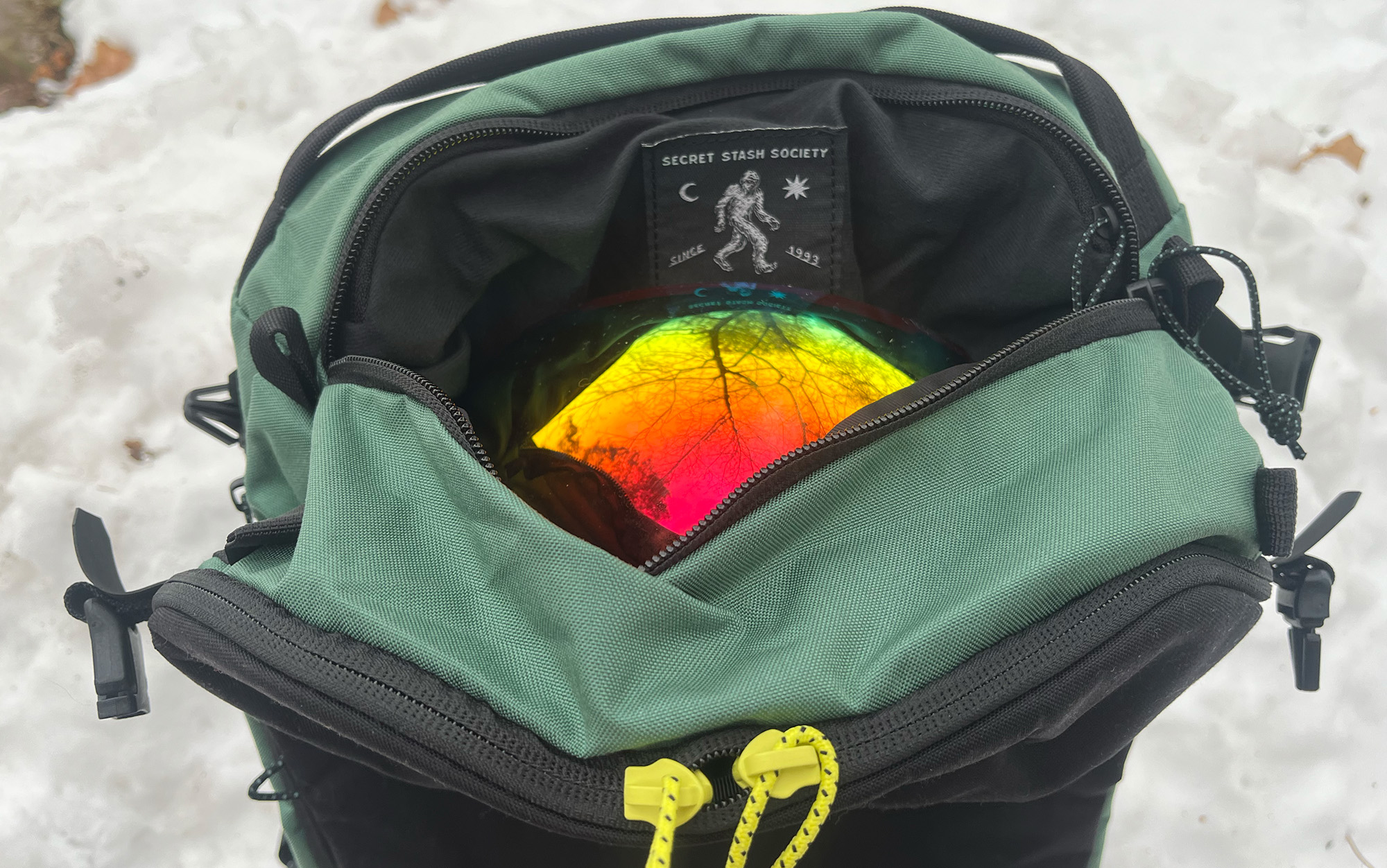
While there is an additional access point to the main compartment besides the back panel, it is inside the google pocket which can be restricting. However, there are large vertical side zipper pockets with expandable bellows for skins, extra gloves, or water bottles that are easy to access and aid in organization. The hip belts are also adjustable and there is one pocket for hand warmers or snacks. — Ashley Thess
Read Next: Best Winter Backpacks
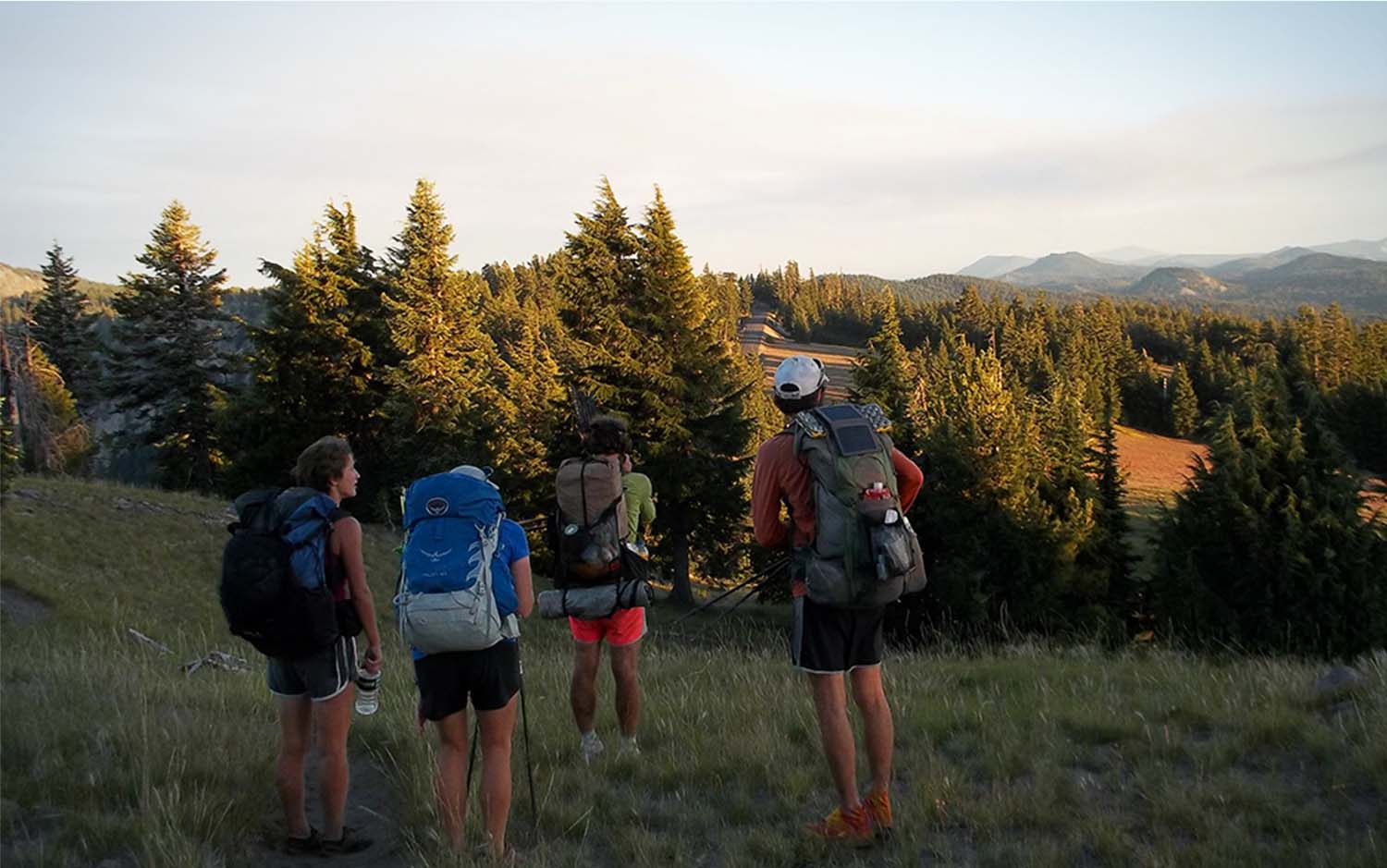
Things to Consider Before Buying a Backpack
Capacity
Backpacks range in size from 10 liters all the way up to 70 liters and more. While it can be tempting to go for a pack that is slightly larger than what you think you’ll use — just in case — this usually leads to overpacking, making your backpack unnecessarily heavy. I recommend a 20L to 30L pack for a day hike, 45L to 55L for overnight trips, and 55L to 65L for multi-night treks. While 70L+ packs are common in the backcountry, I only recommend these for people who need a lot of gear, such as hunters.
Read Next: Best Hiking Backpacks
Size
There are two measurements to look at when choosing a backpack: torso length and waist circumference. The first is usually categorized by small, medium, and large (for men and women), but some backpacks allow you to adjust the torso length on the backpack frame itself. This not only helps to get a perfect fit with your pack, but can also be useful when loaning out or sharing gear.
The hip belt should wrap around the bones of your hips with the buckle snapping shut under your belly button and the webbing adjusted evenly on either side for a snug fit.
Typically, hip belts are one size fits all, so if you find that there is a lot of excessive webbing on yours after adjusting (and you’re committed to your pack), one option is to cut off the excess. To trim your belt, cut it so that only eight inches are left on each side, and then carefully sear the edges with a lighter so they don’t fray.
If you’re finding that the hip belt is too small on the packs that fit your torso size, you have a few options: ULA-brand packs size the hipbelt and torso separately, allowing for greater customization. Select Osprey packs have hip belts that can be extended out to accommodate larger sizes, or that can be swapped out entirely for larger sizes. More recently, Gregory came out with a selection of packs tailored to plus-size bodies.
Comfort
What fits well for one person might not fit well for another, so I recommend spending some quality time — trying out the load-bearing adjustments, making sure the hip belt is sitting comfortably — with your pack before committing. I’ve worn enough packs to know that what works well in a store doesn’t always work well out on the trail. If after carrying a full load in the mountains, your body is telling you this isn’t the pack (trust me, you’ll know), don’t hesitate to try something new.
Extras
Some ultralight backpacks are little more than tubes with shoulder straps, while others incorporate everything from waterproof zippers to built-in daypacks. The advantage to additional features is that some of them — like water bottle holders, trekking-pole loops, or a sternum-strap whistle — can be quite useful. The disadvantage is that these extras can make gear heavier than it needs to be. My top pick, the REI Flash 55, is a great option for learning which extras you value, which can in turn help inform your purchasing choices in the future.
FAQs
The best backpacks for day hikes typically run from $100 to $150 (the Quechua MH500 being the outlier), while a good backpacking backpack is typically $200 to $300. Backpacks are considered one of backpacking’s “Big 3” in terms of both weight and cost—along with sleeping bags and tents—so this is one area where it’s worth it to splurge.
A lot of people choose a pack that is 10L, or even 20L, larger than they need, and it makes sense—no one wants to have to leave an essential item at home. But carrying a pack that is larger than you need almost always results in carrying more weight than you need. Both because the backpack is heavier and because our instinct is to fill the space we’ve got. First-time backpackers should aim for something in the 50L to 60L range, while a 20L will hold enough for most day hikers (larger individuals or anyone day hiking in winter conditions may want to jump up to 30L).
Ultralight is a term used to describe a style of backpacking that aspires to reduce overall pack weight down to the bare minimum — this encompasses everything from shelling hundreds of dollars for backpacks made from specialty fabrics to cutting the handle off of a toothbrush. Ultralight backpackers can often get their kit down to under 15 pounds (or even under 10), and often suffice with a 40L pack or smaller. If you’re purchasing a pack for the first time, I recommend staying away from ultralight packs, which are often quite uncomfortable, even with moderate loads.
This is individual to each backpacker (and the different options offered by backpacking manufacturers reflects this variety). If you aren’t sure where to start, I recommend choosing a pack with two side pockets, two hip belt pockets, and a small top lid pocket. Keep in mind that larger pockets at the lid can lead to overweighting the top of the backpack, which can throw people off balance. Other essentials include sleeping pad straps, a sternum strap, and a front mesh pocket. I also think the fewer zippers the better, as these get gunked with dirt and mud and sand over time and become unreliable.
If you’re outside the sizing limits of the backpack you want to purchase, you might find the opposite gender’s pack fits better. The important difference between men’s and women’s packs is the shape of the shoulder straps. Men’s are a J shape and women’s are an S shape, which reflects differences in chest shape and size. In my experience, this difference is not as essential as torso length (not even in the ballpark), so if the opposite gender pack is a better fit, then that’s the pack for you. Some gear manufacturers (such as REI Co-op) are beginning to move away from gendered colors on packs, as well, making this an increasingly viable option for people trying to dial in their pack size. Very petite women can also look at kids’ backpacks modeled on adult versions for a better fit.
Final Thoughts
Choosing the best backpack for your needs is one of the most important purchasing decisions an outdoor adventurer can make. There are many great backpack manufacturers, but my selections here are focused on gear that has the widest possible utility.
